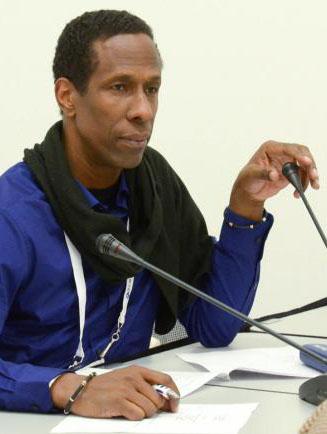PROVIDENCE, R.I. [Brown University] — If decades of effort to bring more underrepresented minority students into science, technology, engineering and mathematics (STEM) fields were considered a grand chemistry experiment, then the modest results would suggest that while the formula may not be wrong, it may well be incomplete, according to a new article in the journal CBE-Life Sciences Education.
“I don’t necessarily want to say that we’ve been doing it wrong all along, it’s just that there are other ideas we can bring in,” said lead author Andrew G.Campbell, a Brown University biology professor who develops and studies programs to recruit and retain underrepresented minority (URM) students to STEM.
Specifically what’s been missing, Campbell said, has been the unfettered input of URM students. To begin to remedy that, he and his co-authors elicited the views of 50 URM students at a weekend retreat in Woods Hole, Mass., that they organized earlier this year.
“We didn’t just sit down and design a survey and say, ‘This is a good question to ask’,” Campbell said. Surveys run the risk of bearing the biases of those who design them. Open-ended peer dialogue, the authors reasoned, would be more authentic.
Given that wide latitude, the students identified eight major themes that they said would improve their STEM training and career pursuits.
The students — mostly undergraduates, but ranging up to postdocs — hailed from Brown, Harvard University, Morgan State University, Northeastern University, Tufts University, the University of Massachusetts–Boston, Cornell University, the University of Buffalo, LaGuardia Community College, Pine Manor College, the College of Mount St. Vincent, the University of Michigan, Arizona State University, the Universidad Metropolitana, and Elizabeth City State University.
Eight ideas
The eight ideas reflect desires both for more pragmatic advice and deeper senses of connection and social meaning regarding the subject matter. Students suggested:
- Including a social justice component in STEM education. For example considering biomedical research in the context of health disparities.
- Training to help them better explain science to nonscientists, including family members who may be generally supportive but aren’t always familiar with research.
- Connecting STEM with other disciplines, including the humanities and the arts.
- Learning sooner than well into graduate school about the career paths that become available with an advanced STEM degree.
- Gaining guidance for achieving work-life balance. Older students may need this for child care, but even undergraduates may need it because they maybe helping to raise siblings or supporting other family members.
- Reconsidering evaluation metrics that fail to account for the diversity or that reflect a misunderstanding of cultural differences.
- Ensuring access to “invested mentors,” who show a genuine interest in their careers.
- Creating more opportunities for ancillary training, including parallel graduate degree programs, that allow for studies to evolve with changing or broadening interests.
Many of the themes students voiced are not unique to their URM status, Campbell acknowledged, but he said he was struck that students harbored some of the concerns — including a need for work-life balance or career path advice — so early in their academic careers.
Improving programs
Campbell and his co-authors plan to convene another retreat next year with 100 students to expand upon the themes in the paper, for instance to see if they hold up with a different and larger group. Campbell also hopes to learn from students at different stages in their academic or professional career why they’ve made the choices they have.
The data, stories and ideas he gathers can then be applied to shoring up that incomplete proverbial chemistry formula for successfully engaging URM students in STEM fields.
But Campbell said he doesn’t have to look far to find examples of already working, implemented programs that could serve as models for helping students in many of the eight ways they said they need.
At Brown, for example, the open graduate curriculum allows students to pursue a masters degree in one field, (e.g., public health) after enrolling in doctoral studies (e.g., pathobiology). Meanwhile in the https://news.brown.edu/articles/2013/03/diversity, students take noncredit minicourses to help them gain more familiarity with research, Campbell said, but such minicourses could also be developed to address concerns such as science careers or social justice.
“You don’t need an entire class or an entire semester to inform students,” Campbell said. “You can design things like modules where students can learn about various options.”
Meanwhile, at the Rhode Island School of Design, the paper notes, the STEM to STEAM program has produced many good ideas on how to better connect the sciences and the arts and design.
In addition to Campbell, the paper’s other authors are Rachel Skvirsky of UMass–Boston; Henry Wortis of Tufts; Sheila Thomas and Ichiro Kawachi of Harvard; and Christine Hohmann of Morgan State.
The National Institutes of Health funded the research (grants including R13GM106577 and R25GM083270).

